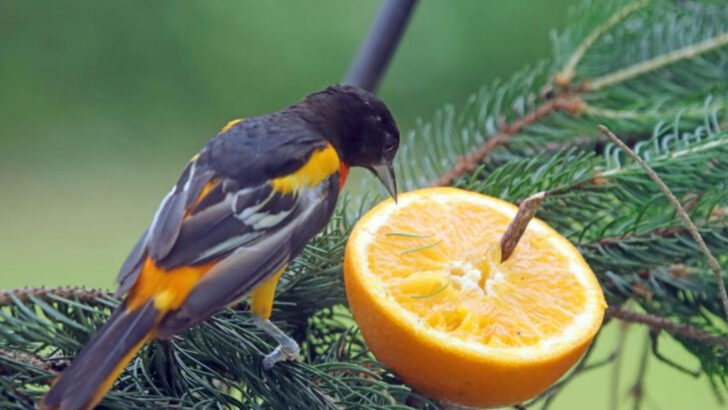Some birds don’t just sing—they light up the morning like little flying sunbeams. As summer stretches on, backyards across the U.S. are filling with color, chirps, and flutters of wings. From bold cardinals to curious chickadees, these 13 birds know how to make a morning feel magical. And while some just pass through, others are scouting out cozy spots to nest—maybe even in your hanging planter or porch light. Yes, right now. This list isn’t just for bird lovers. It’s for anyone who’s ever paused mid-coffee, smiled at a song in the trees, and wondered who’s singing it.
American Robin
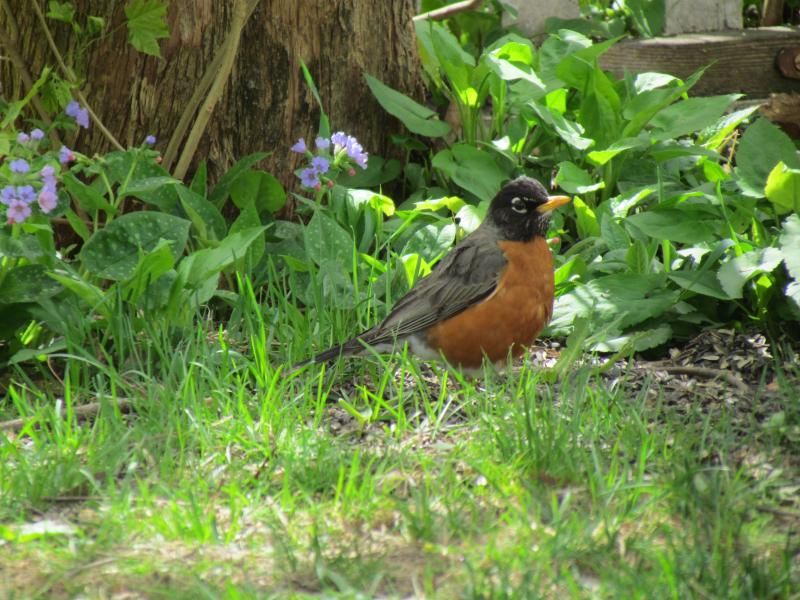
The American Robin, with its cheerful orange breast, is often considered the harbinger of spring. This familiar bird is a common sight in backyards across North America, especially during the summer. Its melodious song, often heard at dawn, sets a joyful tone for the day.
Robins are known for their distinct hopping pattern as they search for worms and insects on the ground. They are also quite adaptable, thriving in a variety of habitats from urban parks to rural gardens.
Fun Fact: Robins are known to be one of the first birds to start singing at dawn.
Northern Cardinal
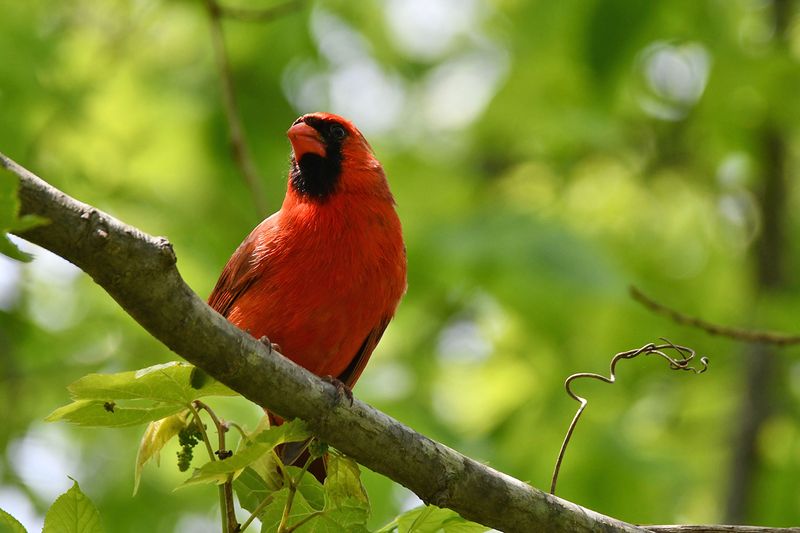
The Northern Cardinal, with its bright red plumage, is a striking presence in any backyard. Males are particularly eye-catching, often perching prominently to sing their rich, whistling songs.
These birds are fiercely territorial, and their song serves both as a declaration of territory and a call to mates. Cardinals are monogamous, often seen in pairs, and they feed on seeds, insects, and fruits.
Did you know? The Northern Cardinal is the state bird of seven U.S. states, a testament to its popularity and beauty.
Blue Jay
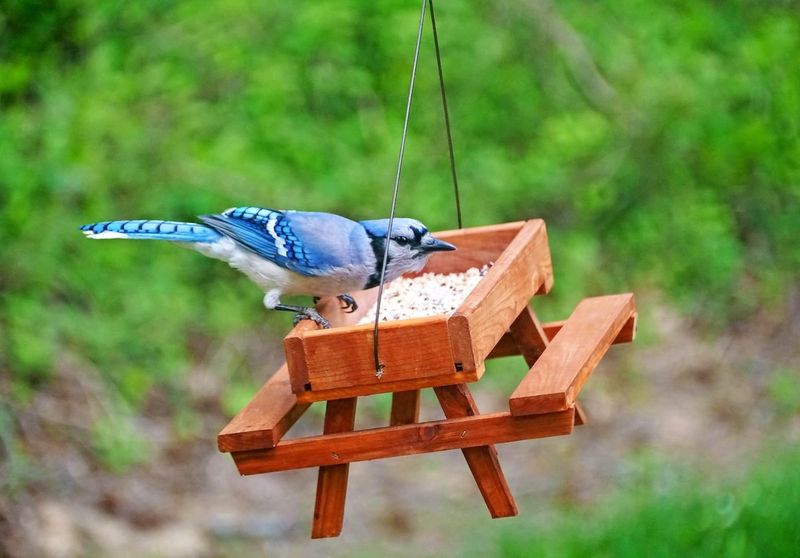
Blue Jays are known for their intelligence and complex social behavior. Their striking blue and white feathers and distinctive crest make them easy to identify.
These birds are excellent mimics, often imitating the calls of hawks to scare other birds. Blue Jays are also known for their love of acorns, playing a significant role in spreading oak trees.
Despite their bold appearance, they can be shy and cautious, often warning others of approaching danger with their loud calls.
American Goldfinch
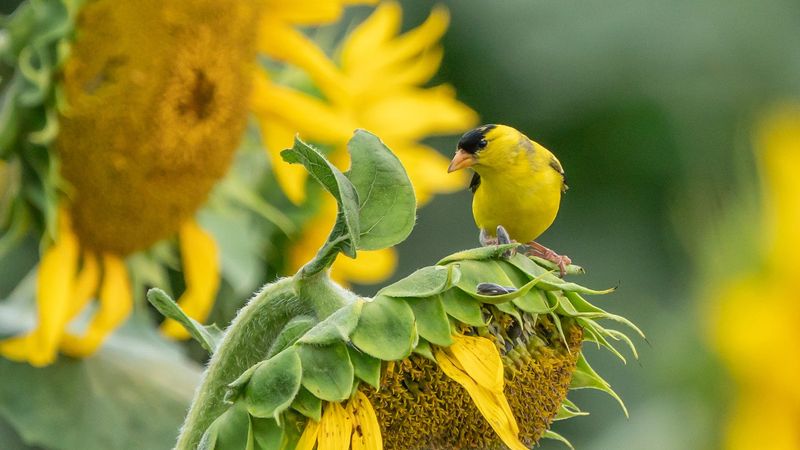
American Goldfinches, with their bright yellow plumage, are like rays of sunshine flitting through gardens. These small finches are highly sociable, often seen in flocks, especially during migration.
They have a unique flight pattern, characterized by a series of dips and rises, as they move through the air. Goldfinches feed primarily on seeds, and their love for sunflowers and thistles is well-known.
Fun Fact: Unlike many birds, goldfinches molt their feathers twice a year, giving them a fresh set of feathers for winter and summer.
Mourning Dove
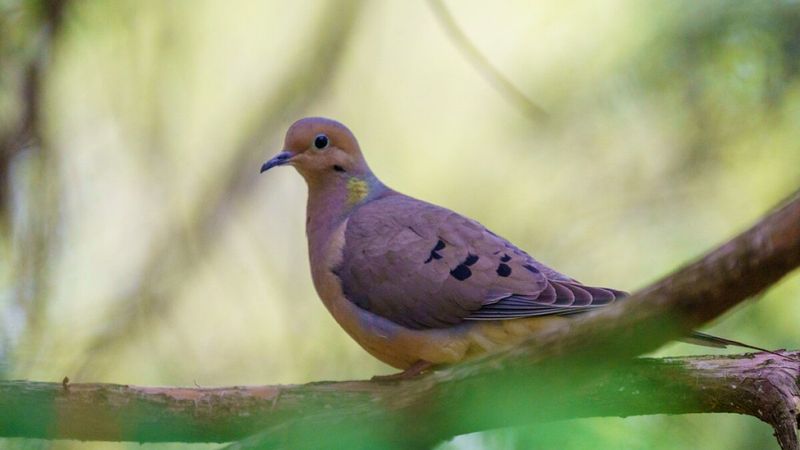
The Mourning Dove, with its soft, cooing call, adds a calming presence to summer mornings. Its slender, streamlined body and delicate coloring make it a graceful visitor.
These doves are ground foragers, feeding on seeds and grains, and are often seen in pairs or small groups. Their mournful call, often mistaken for an owl’s, resonates through the quiet morning air.
Did you know? Mourning Doves are strong fliers, capable of reaching speeds up to 55 miles per hour.
Red-winged Blackbird
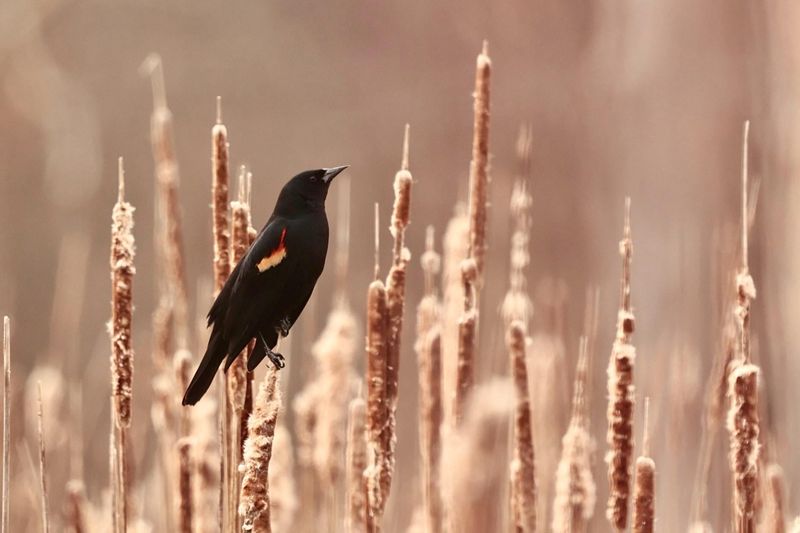
The Red-winged Blackbird is famous for its striking red and yellow shoulder patches, which contrast vividly against its black body. Found in wetlands and open fields, their bubbling song is a familiar sound.
Males fiercely defend their territories, displaying their colorful shoulders to potential rivals. These birds feed on insects and seeds, playing a vital role in controlling pest populations.
Interesting Fact: During migration, Red-winged Blackbirds can form flocks numbering in the thousands, creating a spectacular aerial display.
Barn Swallow
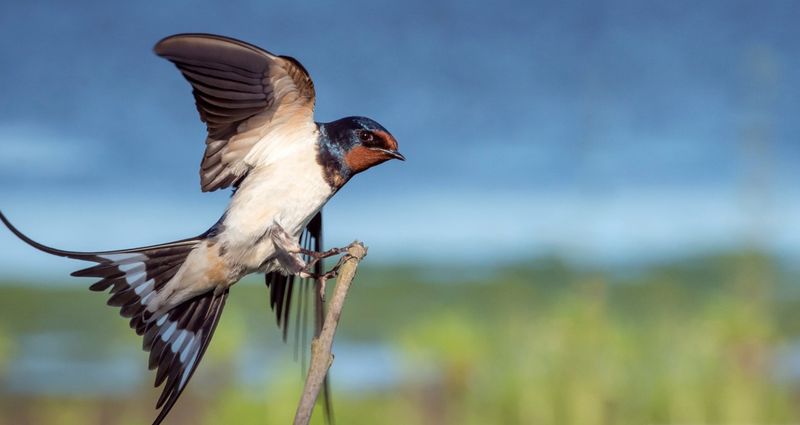
Barn Swallows, with their glossy blue backs and tawny underparts, are a joy to watch as they dart and swoop through the sky. These acrobatic fliers feed on insects, catching them in mid-air.
Their nests, made of mud and grass, are often found in barns and under eaves, providing them with shelter. Swallows are social birds, often seen in large groups as they migrate.
Fun Fact: Barn Swallows can travel over 600 miles a day during migration, showcasing their incredible endurance and adaptability.
House Finch
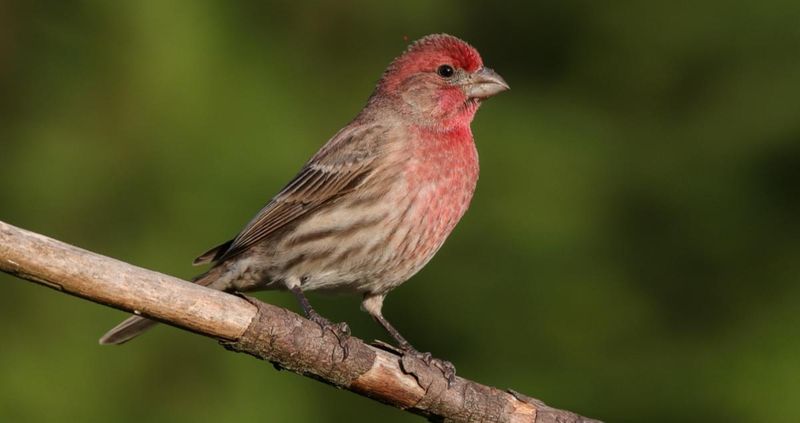
House Finches are cheerful birds with a joyful song that brightens any summer morning. Males are easily recognized by their red heads and chests, a splash of color that stands out.
These adaptable birds thrive in urban areas and are frequent visitors to feeders, where they enjoy seeds and berries. Their song is a pleasant warble, heard year-round.
Did you know? The red coloration in male House Finches comes from pigments in their diet, making it a sign of a healthy and well-fed bird.
Eastern Bluebird
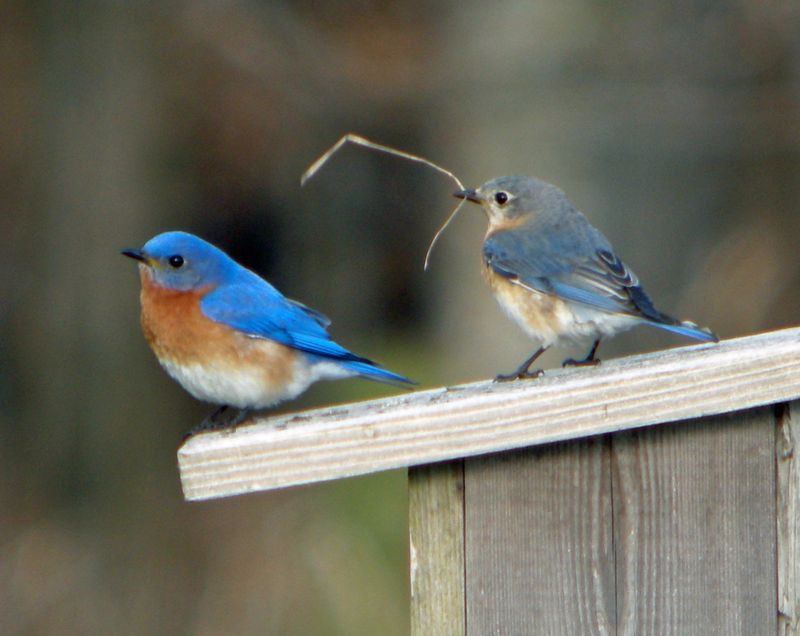
With its brilliant blue wings and warm, orange-brown chest, the Eastern Bluebird is a sight to behold. These birds prefer open fields and meadows, where they hunt for insects and berries.
Their soft, melodious song is a welcoming sound, often heard during the warm months. Bluebirds are cavity nesters, often using birdhouses for shelter.
Interesting Fact: Conservation efforts, including placing nest boxes, have helped increase Eastern Bluebird populations after they faced declines due to habitat loss.
Black-capped Chickadee
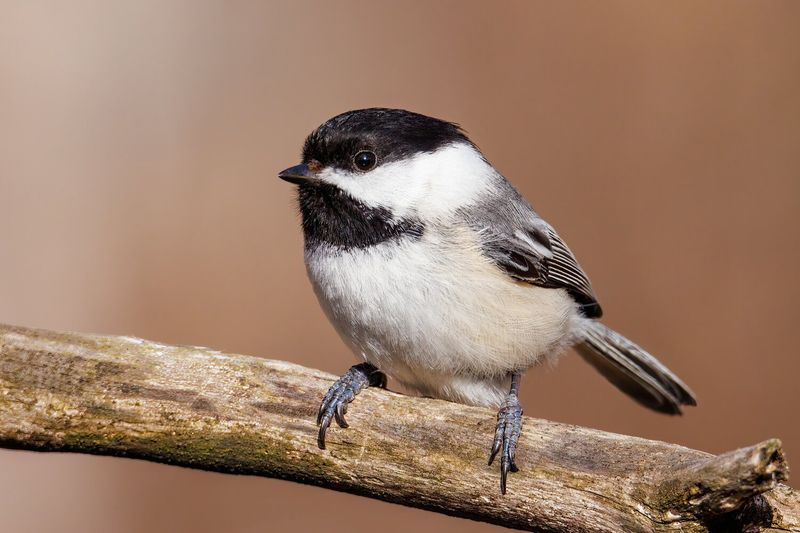
The Black-capped Chickadee, with its distinctive black cap and bib, is a charming visitor to any garden. Known for their friendly nature, these birds are unafraid to visit feeders for seeds.
Their call, a clear “chick-a-dee-dee-dee,” is instantly recognizable and varies in intensity depending on the perceived threat level. Chickadees are also known for their remarkable memory, allowing them to store and retrieve seeds.
Fun Fact: Chickadees can lower their body temperature during cold nights to conserve energy, an adaptation that helps them survive harsh winters.
Song Sparrow
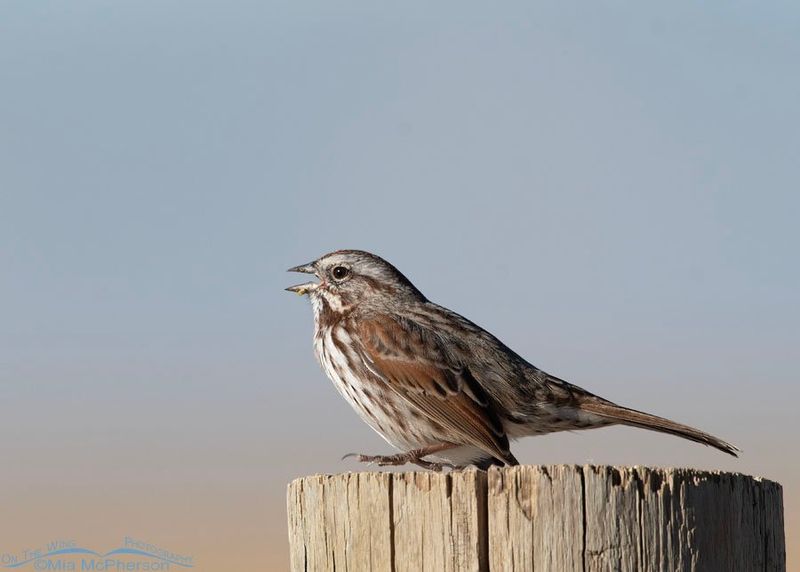
Song Sparrows are small, brown-streaked birds with an exceptional ability to sing. Their melodious tunes vary by region, a delightful symphony for summer mornings.
These adaptable birds are found in diverse habitats, from marshes to gardens, and are ground foragers. They feed on seeds and insects, playing a vital role in the ecosystem.
Did you know? Song Sparrows are known for their territorial nature, often engaging in song battles to assert dominance and attract mates.
Downy Woodpecker

The Downy Woodpecker, with its striking black and white plumage, is a familiar sight in many backyards. The smallest woodpecker in North America, it is known for its undulating flight and persistent pecking.
These birds feed on insects and larvae hidden beneath bark, often visiting suet feeders. Males and females can be distinguished by a red patch on the back of the male’s head.
Fun Fact: The Downy Woodpecker’s stiff tail feathers act as a support when climbing tree trunks, an adaptation shared with other woodpeckers.
House Sparrow
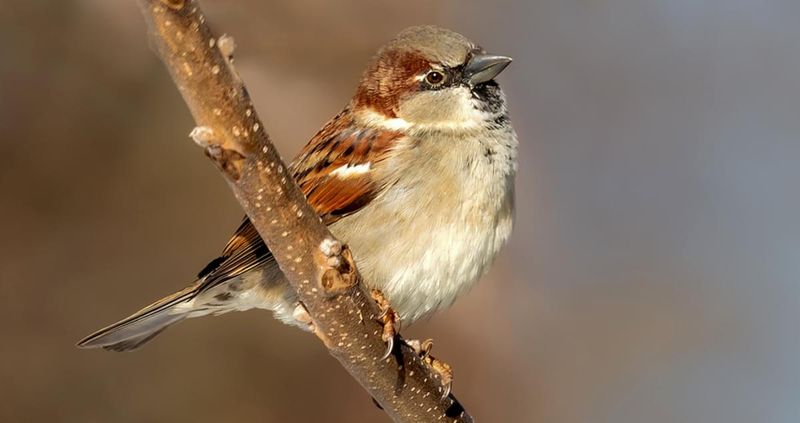
House Sparrows are social birds often seen in bustling flocks. Their brown and gray plumage may seem plain, but their cheerful chirping brings life to urban environments.
These adaptable birds are found worldwide, thriving in cities and towns where they feed on scraps and seeds. Despite their small size, they are bold and resourceful.
Did you know? House Sparrows were introduced to North America in the mid-1800s and have since become one of the continent’s most widespread birds.
Chipping Sparrow
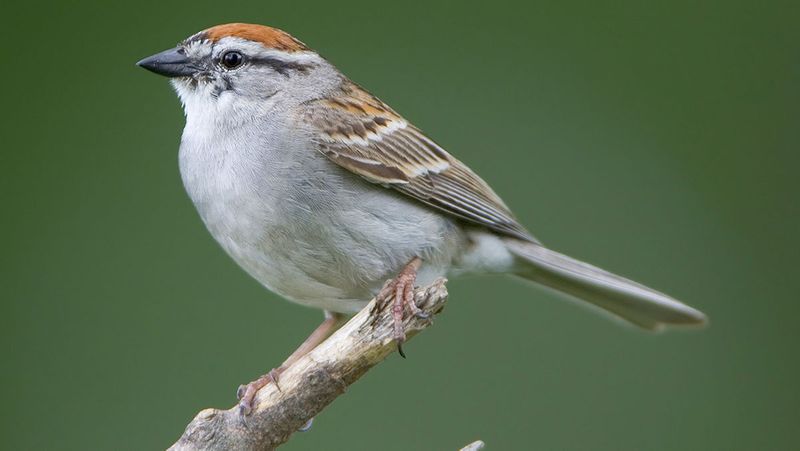
Chipping Sparrows, with their bright rust-colored caps, are a charming addition to summer gardens. These small birds are known for their rapid, trilling songs.
They prefer open woods and garden edges, where they search for insects and seeds. During breeding season, they can be seen collecting grass and hair to line their nests.
Interesting Fact: Chipping Sparrows often return to the same breeding grounds year after year, displaying strong site fidelity.
Purple Martin
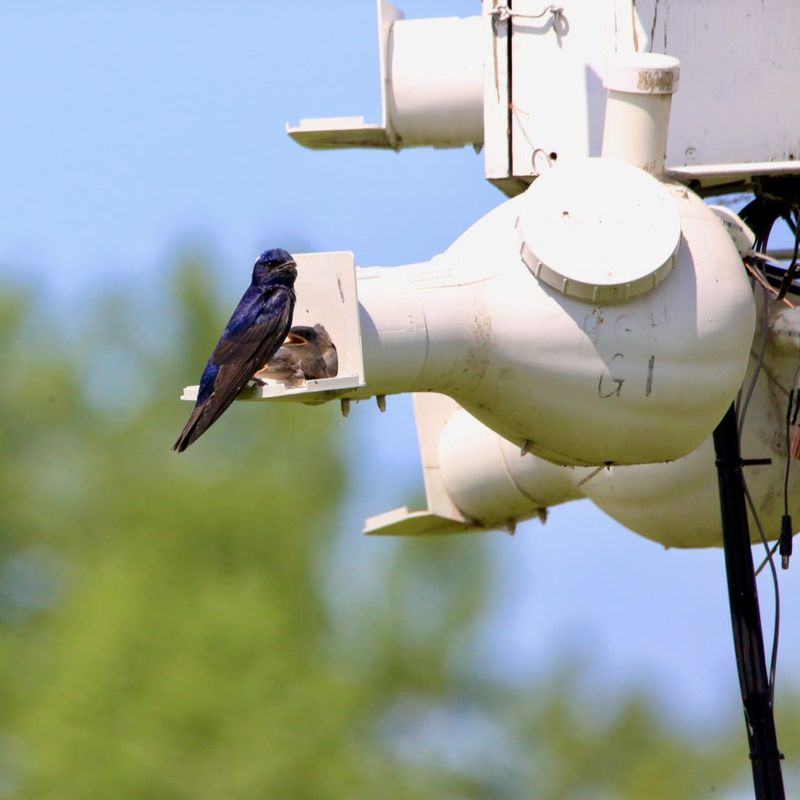
Purple Martins are the largest swallows in North America, known for their aerial acrobatics as they catch insects in flight. Their iridescent blue-black plumage shimmers in the sun.
These birds are highly social, often nesting in colonies in specially provided birdhouses. Their cheerful calls and graceful flight patterns bring joy to those who watch them.
Did you know? Purple Martins rely heavily on human-provided nesting sites in the eastern U.S., making them dependent on conservation efforts.
Baltimore Oriole
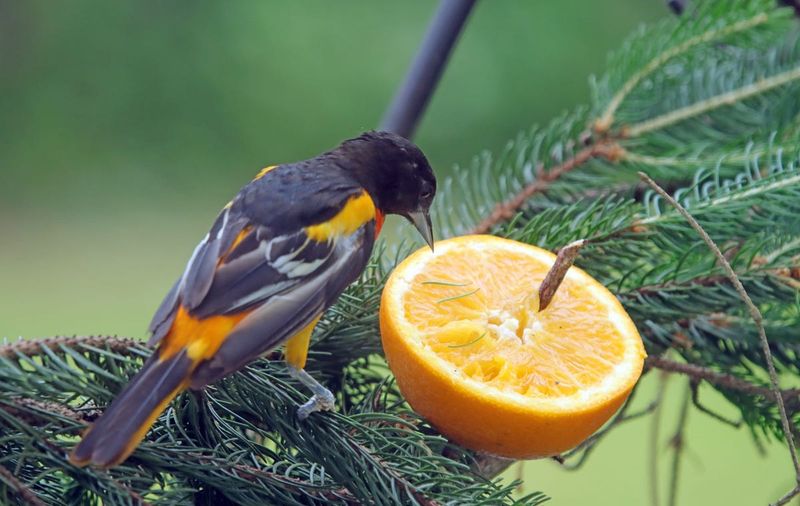
Baltimore Orioles are a burst of color with their vibrant orange and black feathers. These striking birds are often attracted to feeders stocked with fruit and nectar.
Their flutelike song is a sweet addition to the sounds of summer, resonating through gardens and woodlands. Orioles weave intricate, hanging nests using fibers and grasses.
Interesting Fact: Orioles are fond of sweet foods, and offering orange slices and grape jelly at feeders can entice them to visit your backyard.
Gray Catbird
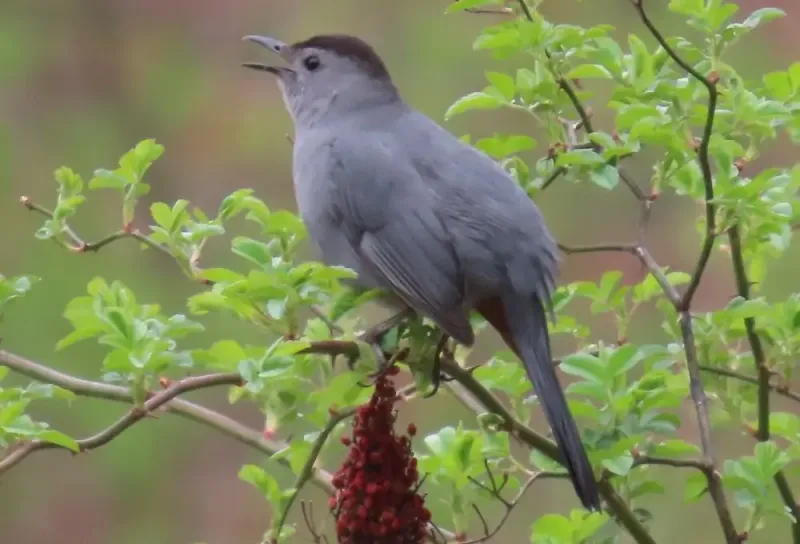
The Gray Catbird, with its slate-gray plumage and black cap, is a master mimic. Known for its cat-like meow, this bird can replicate various sounds, adding intrigue to its presence.
Catbirds prefer dense shrubs and thickets, where they feed on fruits and insects. Their secretive nature makes spotting them a rewarding challenge.
Did you know? Gray Catbirds are gifted vocalists, often performing a mix of their own songs and mimicked sounds from their surroundings.
Rufous Hummingbird
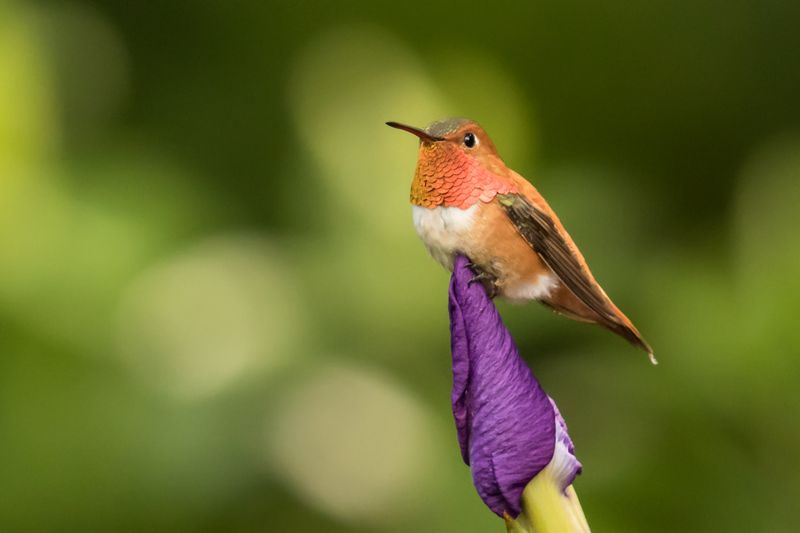
Rufous Hummingbirds are tiny dynamos, known for their brilliant orange plumage and incredible flying abilities. These hummingbirds are fiercely territorial, often chasing off larger birds.
Their rapid wing beats create a humming sound as they hover to feed on nectar, a vital energy source. Rufous Hummingbirds embark on one of the longest migrations relative to body size.
Fun Fact: Despite their size, Rufous Hummingbirds can remember individual flowers and feeders in their territory, demonstrating remarkable spatial memory.
Tufted Titmouse
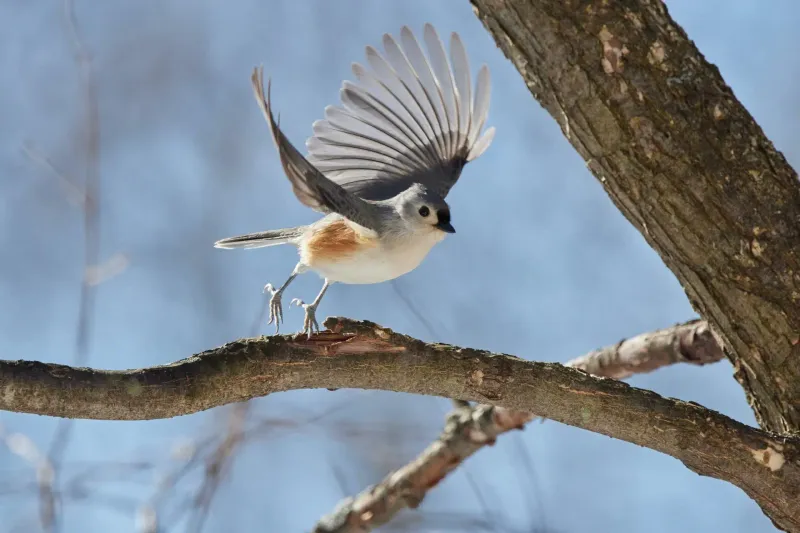
The Tufted Titmouse, with its gray feathers and charming crest, is a delightful visitor to feeders. These agile birds are known for their curious nature, often inspecting surroundings with keen interest.
Their song, a clear “peter-peter-peter,” resonates through woodlands and gardens alike. Tufted Titmice are social, frequently seen in mixed flocks with chickadees and nuthatches.
Interesting Fact: These birds are adept at using their feet to hold seeds while they peck them open, showcasing their dexterity.
Scarlet Tanager
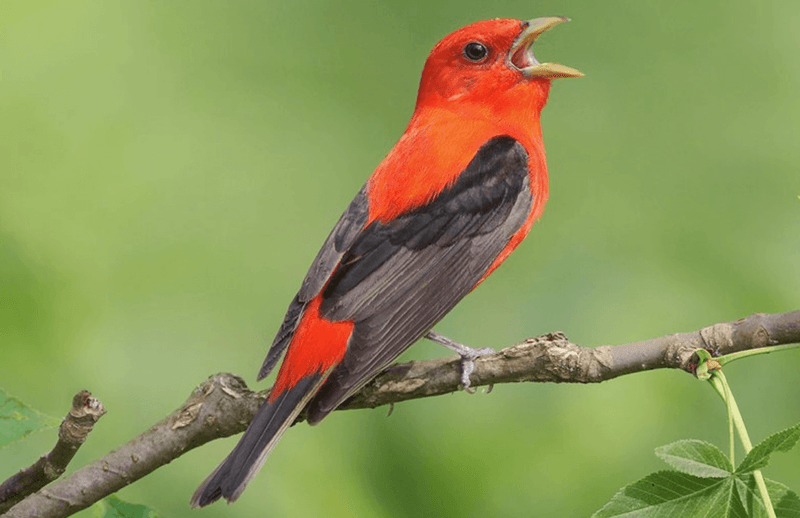
The Scarlet Tanager is like a fiery gem in the canopy, with its blazing red body and contrasting black wings. This bird is a sight to behold, especially during the breeding season when males flaunt their vivid hue.
Imagine waking up to the soft, sweet notes of the Scarlet Tanager as it perches high in the trees, adding a burst of color to the morning palette. Its song is a series of short, burry phrases, often likened to the robin’s but with a coarser texture.
Did you know? Despite their tropical appearance, these birds breed in North American deciduous forests, gracing backyard bird feeders occasionally during migration. Search for them in tall trees, where they hunt for insects and enjoy berry treats.

